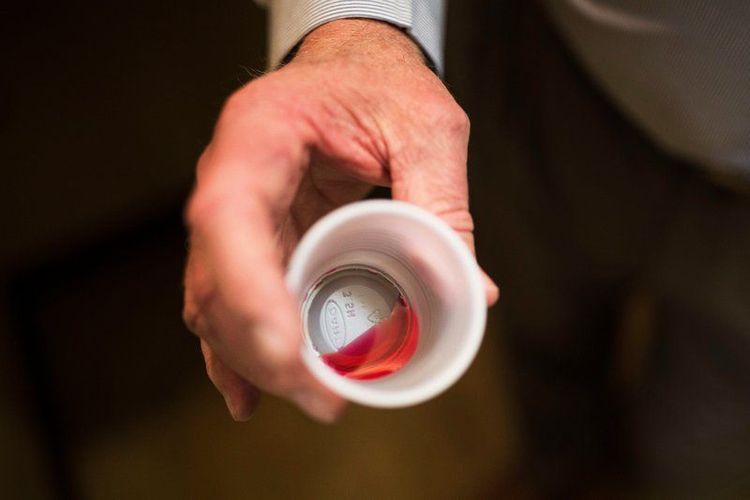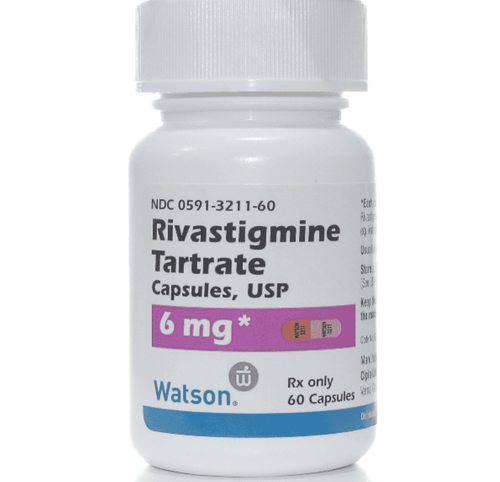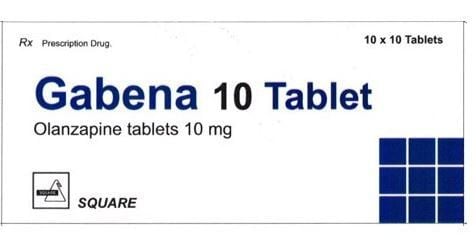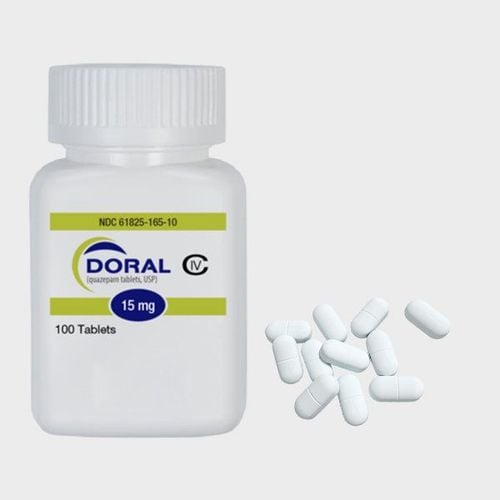This is an automatically translated article.
Methadone is a long-acting opioid agonist. This is a drug commonly used to treat heroin addiction. By using methadone, heroin addicts have a safer withdrawal process, reducing the likelihood of relapse.
1. What is Methadone?
Methadone is a derivative of the opioids group. During the period of the world war, the drug was prepared and used for extremely painful wounded soldiers. Today, methadone is still valid for use, playing an important role in the treatment regimen for heroin addiction or narcotic pain medication in general.
Methadone works a lot like morphine. Patients can take the drug in the form of tablets, powder or liquid. However, methadone should never be used arbitrarily, but always needs to be prescribed by a doctor as well as managed by a local administrative agency. Illegal use of methadone, including by injection, is also considered a crime and also carries a risk of diseases such as HIV.
Accordingly, although methadone may be safer than some other narcotic substances, people in the process of heroin addiction need to be closely monitored by a doctor, in order to effectively quit heroin and prevent addiction. flooding or abusing methadone.
2. Effects of using methadone when treating heroin addicts
Methadone when taken into the body will change the way the brain and central nervous system perceive and respond to pain, helping patients reduce pain, feel more relieved. In clinical practice, doctors may prescribe methadone when a patient is experiencing pain from trauma, surgery, or a chronic disease such as cancer.
The effects of these opioids have a slower onset of action than other strong pain relievers such as morphine. However, it is still effective in preventing drug-absence episodes when high levels of narcotics have been taken such as codeine, heroin, hydrocodone, oxycodone, and morphine. Therefore, in addition to pain relief in medicine, methadone also works to treat addiction to other opiates.
When taken into the body, methadone can provide similar sensations, reduce cravings and prevent withdrawal symptoms. At this time, the drug is only indicated in small amounts and used once a day in liquid form. Addicted people who use methadone to quit smoking need to take the drug in front of local medical staff or administrators. In addition, they receive guidance, counseling and participation in other comprehensive treatment plans as well as social support programs, to increase the likelihood of successful detoxification and reintegration into the community.

Dùng methadone khi điều trị cho người nghiện heroin
3. How to use methadone when treating heroin addicts
Methadone is considered safe and effective when taken as prescribed. The dose of methadone is tailored for each patient with varying degrees of withdrawal and history of drug use. During all times of using methadone, the patient must receive the drug under the supervision of a doctor. Only after a period of stabilization, based on proven compliance, can patients be considered for home methadone in conjunction with scheduled scheduled visits.
The time it takes to use methadone to treat heroin addiction depends on the compliance ability of each subject. However, experts say it takes at least a year, and in some cases, longer than that. After the standard dose of methadone, the patient will be adjusted to reduce the dose gradually to prevent withdrawal syndrome, which easily causes the possibility of relapse. Even so, if a high risk of relapse is seen, some patients may need long-term methadone maintenance.
During the time of taking the drug, the patient may have feelings of restlessness, nausea or vomiting, slow breathing, itchy skin, excessive sweating, constipation ... and also sexual problems. This is especially important for patients who are not required to take the drug under direct supervision but can take methadone at home. It is necessary to monitor these symptoms, if they occur at a severe and unacceptable level, they should report back to the doctor so that the regimen can be adjusted accordingly.
The following guidelines can help people with heroin addiction achieve the best treatment results and ensure the safety of others:
Never use more than the prescribed amount of methadone. Maintain taking methadone at the prescribed time of day. If a dose has been missed, or if it feels like it's not working, don't take an extra dose of methadone as this increases the risk of drug abuse. Do not drink alcohol while taking methadone. Be careful while driving or operating machinery while taking methadone. Never share your methadone with anyone even if they have similar symptoms or have a similar condition.

Methadone cần được dùng theo chỉ định của bác sĩ
4. Things to keep in mind when taking methadone
Some subjects have problems and medical conditions that will be contraindicated to methadone use as follows:
Cardiovascular disease Heart rhythm disturbances Electrolyte imbalance Respiratory disease History of head injury, brain tumor or stroke Convulsions Liver or kidney disease Urinary dysfunction Diseases of the gallbladder, pancreas, or thyroid In addition, the person being treated for substance abuse and their family need to be aware of the possible symptoms as well. side effects from taking methadone. Accordingly, when you see the following signs, stop taking methadone and get the patient to the hospital as soon as they are:
Shortness of breath or shallow breathing Feeling lightheaded or dizzy Rash Swelling of the face, lips, tongue or neck Throat Feeling chest pain Fast or slow heartbeat Hallucinations or confusion In addition, methadone overdose symptoms may be as follows:
Slow breathing Slow heart rate Drowsiness, lethargy Muscle weakness Cold skin , wet Small pupils Fainting In some cases, an overdose of methadone can be fatal. Therefore, it is necessary to be absolutely honest about the dose of methadone used as well as other types of heroin, narcotic drugs, tranquilizers, pain relievers... to help doctors orient appropriate response.
In summary, methadone is the most effective method of heroin addiction today. By adhering to taking methadone every day with a controlled dose, heroin addicts will have the opportunity to get rid of the "ghost" of haunting, confidently integrate into the community, and build a new life for themselves and their families. family.
Source: reference: WHO, Department of HIV/AIDS Prevention
MORE:
Blood test to detect addictive substances How many stages does HIV disease have? How long is the HIV window?













